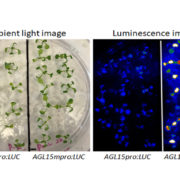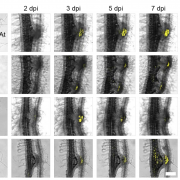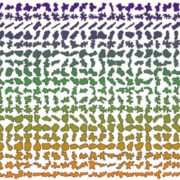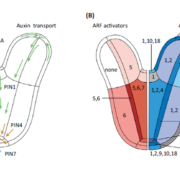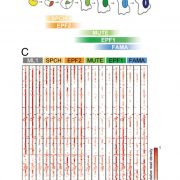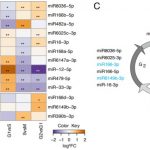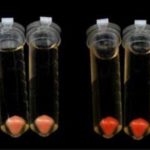Very long chain fatty acids (VLCFA) are involved in lateral root formation (PNAS)
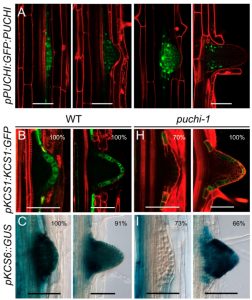 Root branching determines the spatial organization of the root and its interaction with the soil. The emergence of lateral roots (LR) is controlled by a complex regulatory network, involving genetic, hormonal and mechanical factors. In this study, Trinh et al. got new insights about PUCHI, a transcription factor previously shown to control cell proliferation during lateral root primordium (LRP) formation. Through co-expression analysis using time-course transcriptomic data of LRP organogenesis, the expression of many genes encoding enzymes involved in very long chain fatty acid (VLCFA; fatty acids with 20 or more carbons) biosynthesis was correlated with PUCHI expression. VLCFA are regulators of cell proliferation and important for membrane dynamics; the content and distribution of this kind of lipids can alter hormone signaling and affect the mechanical properties of the cell wall. The authors studied the expression patterns of the VLCFA biosynthesis genes in emerging LR. The density of emerged LR was not different between puchi-1 and WT, but the puchi-1 mutant has three times more LRP. With these data, they conclude PUCHI represses LRP initiation and the spacing between LRP. Other VLCFA mutants, kcs-5 and the cer10-2, had similar but less severe root branching defects. The authors also found that the control of VLCFA biosynthesis pathway by PUCHI controls cell proliferation in both lateral root development and callus formation. (Summary by Humberto Herrera-Ubaldo). Proc. Natl. Acad. Sci. USA
Root branching determines the spatial organization of the root and its interaction with the soil. The emergence of lateral roots (LR) is controlled by a complex regulatory network, involving genetic, hormonal and mechanical factors. In this study, Trinh et al. got new insights about PUCHI, a transcription factor previously shown to control cell proliferation during lateral root primordium (LRP) formation. Through co-expression analysis using time-course transcriptomic data of LRP organogenesis, the expression of many genes encoding enzymes involved in very long chain fatty acid (VLCFA; fatty acids with 20 or more carbons) biosynthesis was correlated with PUCHI expression. VLCFA are regulators of cell proliferation and important for membrane dynamics; the content and distribution of this kind of lipids can alter hormone signaling and affect the mechanical properties of the cell wall. The authors studied the expression patterns of the VLCFA biosynthesis genes in emerging LR. The density of emerged LR was not different between puchi-1 and WT, but the puchi-1 mutant has three times more LRP. With these data, they conclude PUCHI represses LRP initiation and the spacing between LRP. Other VLCFA mutants, kcs-5 and the cer10-2, had similar but less severe root branching defects. The authors also found that the control of VLCFA biosynthesis pathway by PUCHI controls cell proliferation in both lateral root development and callus formation. (Summary by Humberto Herrera-Ubaldo). Proc. Natl. Acad. Sci. USA


